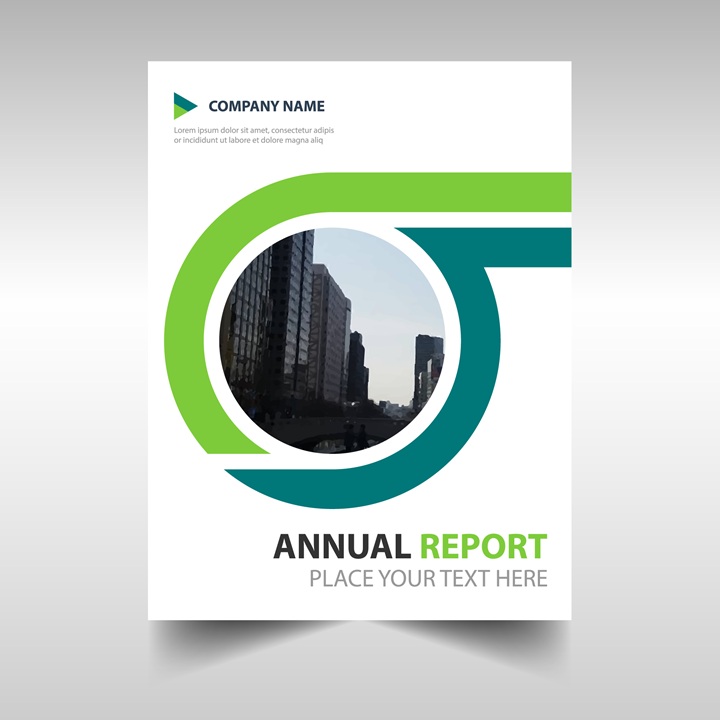Annual reports have evolved into strategic narrative tools that depict a company’s culture, goals, and performance in a world that is becoming more and more visual-first. As 2025 approaches, the standards for annual report design have changed from conformance to artistic quality. Being ahead of these trends will provide your brand more influence, credibility, and change, regardless of your experience level as a corporate communications lead, seasoned B2B marketing director, or aspirational startup founder.
The top Annual Report Design trends for 2025 are examined in detail here; each is intended to engage stakeholders, promote involvement, and establish your company as a progressive leader.
1) Data Storytelling: Transforming Data into Stories
Revenue, growth, and performance measurements have traditionally been the focus of annual reports. Those figures will still be significant in 2025, but the way you display them will be more important.
Why It Matters :- Detailed tables and generic bar charts bore investors and decision-makers. Data is now being rethought as tales instead, with visual narratives that emphasize impact, accomplishments, and growth paths.
Design Strategies to Keep an Eye on
- Infographics with a narrative flow
- Digital reports with interactive charts
- Microanimations to draw attention to important events or trends
- Performance dashboards with a “Instagram story” aesthetic for easy scanning
Effects
- Strengthens your strategic positioning
- Increases comprehension
- Fosters trust.
2) Layouts Driven by Editorials and Using Magazine Style
Editorial-inspired annual report designs are becoming more popular in 2025. Consider using full-bleed photos, tasteful type, and thoughtfully placed white space to evoke the refinement of upscale magazines.
The Significance of It:
This method gives narrative dimension and humanizes data-heavy content. It fits in perfectly with brands who want to show not only what they did, but also why it was important.
Design Strategies to Keep an Eye on
- Modern sans-serifs combined with serif display typefaces
- Hero spreads for brand accomplishments or CEO statements
- Thematic picture essays, tale chapters, & pull quotes.
It Speaks To – Corporate communications leaders that want to use design that speaks loudly to humanize leadership and enhance reputation.
3) Customization and Reports Focused on Stakeholders
It is no longer the norm to use a single PDF for everyone. By 2025, businesses will have segmented audiences in mind while creating reports.
The Significance of It
Different indicators are important to different stakeholders. Profitability is what investors desire; culture and leadership are important to employees; and regulators want clarity on compliance.
Design Strategies to Keep an Eye on
- Personalized content blocks for perspectives of customers, employees, and investors
- Intelligent screening in electronic reports
- Cover pages that are micro-personalized for key stakeholders, particularly in investor relations
Result
- Increased involvement
- Loyalty of stakeholders
- Focused narrative
4) The Visual Language of Sustainability
Environmental, social, and governance, or ESG, reporting is now the main body of contemporary annual reports rather than a separate segment.
The Significance of It
Nowadays, audiences closely examine sustainability as a component of a brand’s mission. ESG reporting will be firmly ingrained in annual reports’ visual design by 2025.
Design Strategies to Keep an Eye on
- Earthy color schemes and organic textures
- Impact images (saving energy, saving lives, reforestation)
- Using circular design metaphors to illustrate closed-loop techniques and renewable cycles
Ideal for – founders and marketing directors who want to appeal to both conscious consumers and investor sensitivities.
5) Digital-First & Interactive Reporting
Although print is still used, digital-first formats are becoming more popular. Annual reports from 2025 will increasingly be created for screens rather than paper.
The Significance of It
Reports must have fluid formats that are both aesthetically pleasing and useful on all devices in order to be accessible, interactive, and mobile.
Design Strategies to Keep an Eye on
- Storytelling using scrolling (horizontal and parallax scrolls)
- Motion infographics and short videos
- Audio narration and voiceovers for leadership messaging
- Real-time report interaction engagement metrics
Bonus: Forward-thinking businesses are creating microsites with media-rich features just for their annual reports.
6) AI-Powered Layouts and Images
AI in design aims to enhance creativity rather than replace it. By 2025, companies are using AI to expedite visualization, customization, and ideation.
The Significance of It
It pushes the frontiers of creativity while enabling design teams to devote more time to strategy and less to mundane tasks.
Design Strategies to Keep an Eye on
- AI-generated cover art that embodies the essence of your brand
- Predictive layout algorithms for publishing in several formats
- Infographics with AI support that adjust to real-time data
Audits of brand tones with generative AI Creator plus Sage Moment: Don’t dominate, but enhance with AI. Include it in the workflow of the report, not simply the graphics.
7) Representation in Visual Storytelling Driven by Diversity
Loyalty and hearts are won by inclusive brands. These days, annual reports use visual awareness to emphasize community activities, inclusive environments, and employee voices.
The Significance of It
This is about accurately portraying your complete ecosystem, not simply about exhibiting diversity.
Design Strategies to Keep an Eye on
- Quote profiles and employee illustrations
- Real, independent photography
- Capsules of multilingual content
- Design with an emphasis on accessibility (contrast, screen reader compliance)
Effects
- Creates culture
- Makes your brand more relatable
- Demonstrates leadership that is motivated by values
8) Fonts That Speak Business
Fonts influence perception in addition to conveying words. Brands are spending money on typefaces that quietly convey their individuality in 2025.
The Significance of It – Typography, whether aggressive, elegant, experimental, or subtle, establishes the report’s emotional tone.
Design Strategies to Keep an Eye on
- Fonts that change according to the screen or device
- Personalized fonts for a brand’s signature
- Font combinations that inspire confidence, hope, and creativity
Advice from Sage: Don’t overdo it. Make sure your selections are clear, readable, and consistent with your brand.
9) Micro-Content: Summary Snapshots’ Ascent
A sixty-page report is not read by everyone. Bite-sized content formats are therefore essential in 2025.
The Significance of It
Stakeholders with busy schedules want the future, the victory, and the gist quickly.
Design Strategies to Keep an Eye on
- Executive summaries of one page, “Year in review” reels, or animated films
- Instagram and LinkedIn carousel posts
- Visual highlights for investor decks that may be shared
Ideal for agile teams and startup founders who have to make an impression on stakeholders in a matter of seconds rather than minutes.
10) Design Systems Integrated with Brands
A fragmented report damages your reputation. In 2025, expanding your visual identity across every aspect of the report is crucial for a smooth brand integration.
The Significance of It
Credibility is increased by cohesiveness. Additionally, it increases remember and confidence when your annual report is consistent with your brand.
Design Strategies to Keep an Eye on
- Templates for reports that adhere to brand standards
- Icons that align with campaign and online systems
- Design thinking across channels (website ↔ report ↔ pitch decks)
ROI-Oriented Result
- improves the evolution of a brand
- increases the effectiveness of design
- strengthens brand recognition across platforms.
The Significance of These Trends
Your annual report is a flagship brand asset in 2025, not merely a legal requirement.
When done correctly, it can:
- Involve investors
- Motivate staff
- Gain clients
- Encourage media narratives
For marketing leaders, it’s about using design to demonstrate a steady return on investment.
For the founders of startups, it’s a disguised pitch.
It is a storytelling tool that humanizes leadership for corporate communications teams.






